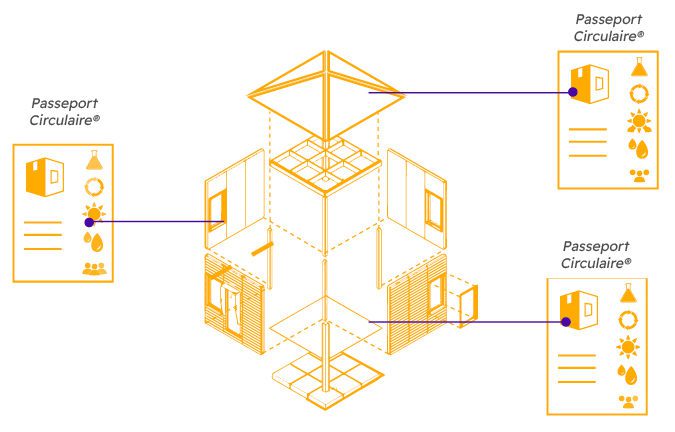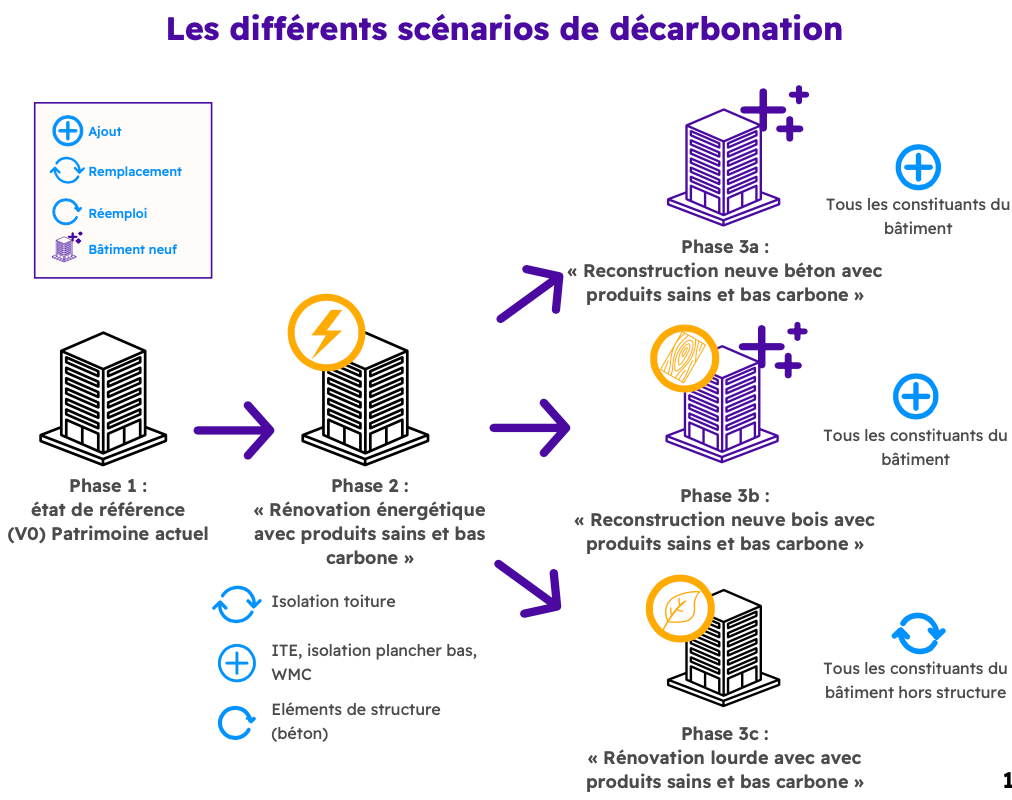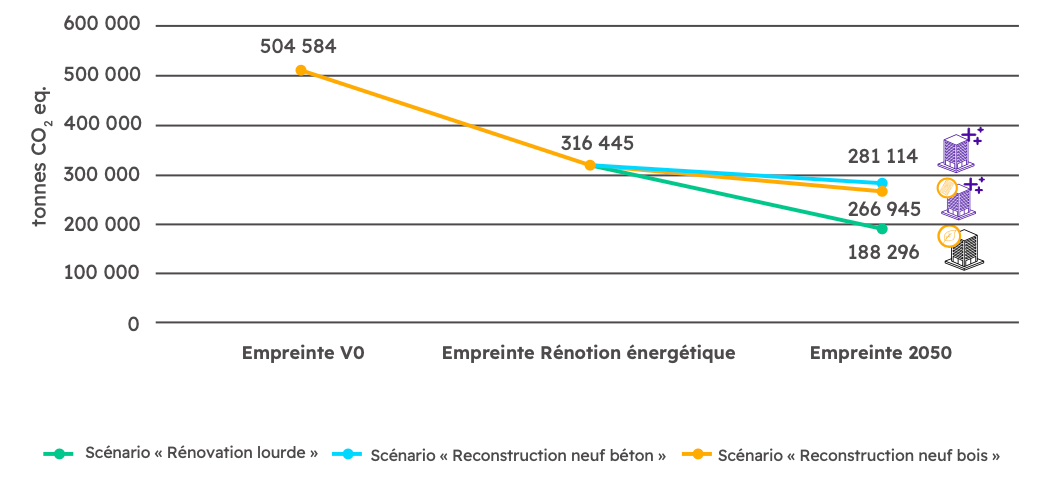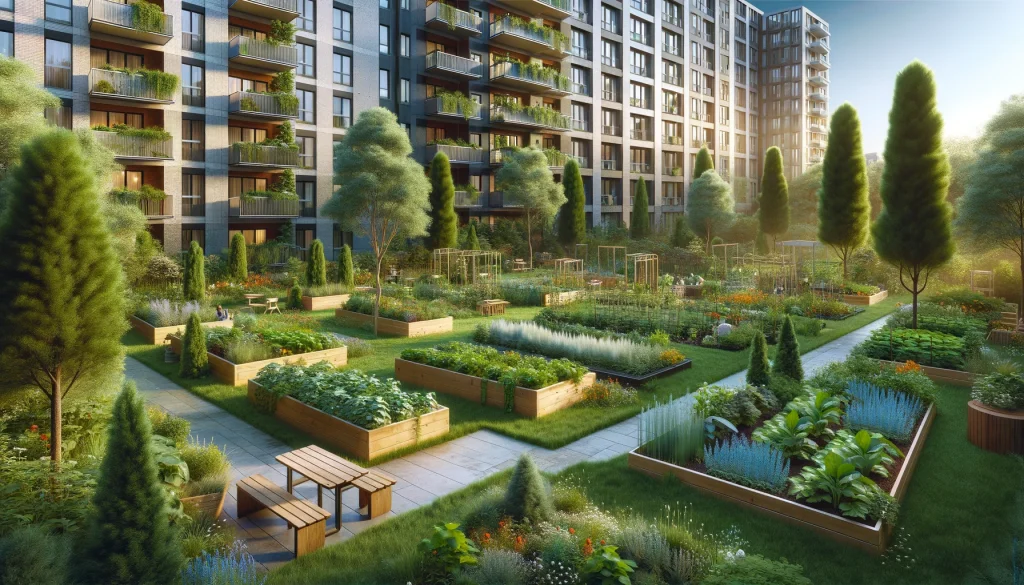Decarbonation strategy
Asset modeling & Decarbonization roadmap

Characterization of a building stock using Circular Passports®.
An approach based on the reality of heritage
A 3-phase strategy
- Modeling of housing stock products (types, quantities, etc.), circular passports®, ……), and import into myUpcyclea in the form of digital material banks,
- Measuring the“scope 3” carbon footprint of our assets, by generating the Circular Signature® automatically calculated by myUpcyclea,
- Drawing up a decarbonization roadmap for our assets, based on different renovation scenarios.


Decarbonization roadmap
The carbon footprints (scope 3) of the different scenarios are calculated using Upcyclea’s Circular Signature® function, in accordance with the rules of the international standard EN 15978:2011.
In the case study opposite (corresponding to the 1,100 buildings owned by Habitat 77),a major renovation of the entire portfolio represents a 62% reduction compared to the current situation (2023), and a 40% reduction compared to an energy-efficiency renovation.
Carbon credits and decarbonization actions
Thanks to the circular renovation actions and the resulting Circular Signatures® measurements, it is possible to measure the carbon avoided in relation to the asset’s reconstruction – i.e. 316,000 tCO2eqin the case of Habitat 77 -, and thus generate carbon credits.
myUpcyclea can certify these carbon credits and find buyers among the major emitters, thanks to partners such as south pole.
At €25 per tonne of CO2 avoided, this represents nearly €8 million for Habitat 77, which will help finance carbon sink projects, such as renovations, green spaces and reforestation, in and around Habitat 77 developments, and offset the residual carbon footprint of the estate by 2050.
